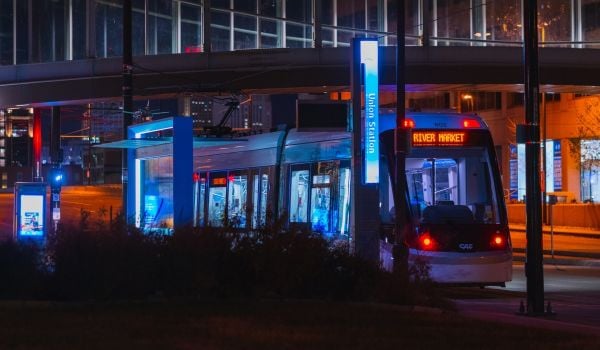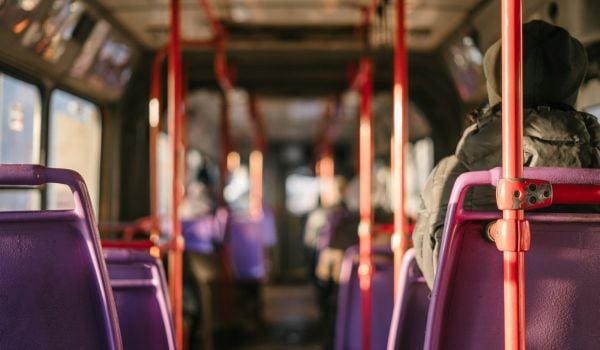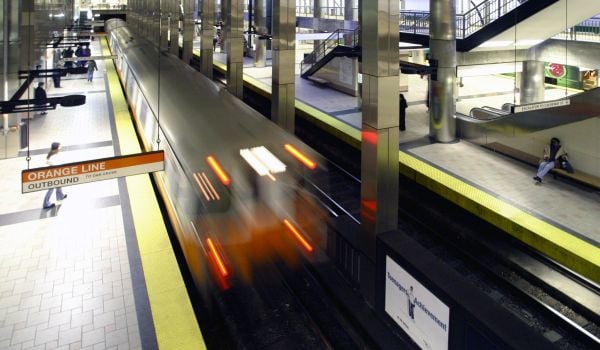It’s only 6 a.m., but your day is well underway. It’s barely light out, but you’re already rushing to get yourself and your two kids dressed, fed and out the door of your apartment. You are already dreading the five-minute sprint down the street to catch a 20-minute bus ride to a stop that’s still a 15-minute walk to your child care program. Drop-off lasts longer than usual – your child’s teacher had a few questions about snack time – but without the kids in tow, you can shave a few minutes off your walk back to the stop to wait for the bus to work. You hope that construction isn’t slowing everything down again. At least it’s early – it’ll be rush hour when you retrace your route to pick up the girls at the end of the day.
For thousands of metro-area families, this juggle is an everyday affair. Because, though child care is critically important, the existing supply still doesn’t meet demand. As child care providers nationwide work harder than ever to stay afloat in a tightening labor market, families are also struggling to find arrangements that meet the developmental needs of their kids and their household budgets.
Families across the U.S. spend, on average, just under $11,000 per year on child care for just one child, and in many states, the cost of child care is much more than that. This scarcity and the high cost of care are impacting our country’s bottom line: Business leader membership organization ReadyNation reports that the lack of available, affordable, quality infant-toddler child care costs us $122 billion annually in lost earnings, productivity and revenue.
To access child care, though, parents actually need to be able to physically get to it. America’s cities depend on both child care and public transportation to be livable places. Unfortunately, little attention is paid to how these systems intersect. And when child care and public transit aren’t in alignment, everyone is worse off.
A critical step toward solving this problem is helping city administrators, urban planners, economic developers, employers and other decision-makers understand how prevalent these challenges are so they can identify strategies to better connect families to child care options.
First Five Nebraska, working with Child Care Aware® of America and the Alliance for Early Success, recently developed a dashboard that explores the child care and public transit landscape in metropolitan Nebraska. Their findings were staggering.
In Lincoln and Greater Omaha, only about 45% of all licensed child care providers serving children under age 6 are located within a 10-minute walk of the nearest public transit stop. For parents with very young children, those 10 minutes can be insurmountable, especially given the challenges of navigating public transportation systems and increasing extremes of weather.
And, unfortunately, Nebraskans aren’t alone here. Public transportation across the United States is woefully inadequate, largely because our bus and train infrastructure is aging rapidly and large-scale investment is necessary to preserve it. The American Society of Civil Engineers determined in a 2021 report that continued underinvestment in infrastructure could cost the country more than three million jobs by 2039.
In 2021, Congress passed new federal investments that provide $89.9 billion in guaranteed funding for public transit through 2026, which is the largest federal investment in public transit in America’s history.
After decades of underfunding, this is a much-needed start to reviving our country’s infrastructure. We can, and must, do better.
The Child Care and Public Transit Dashboard was designed to ensure decision-makers can build systems that better serve their communities, which is good for children, families and our economies. Quality child care that is affordable and accessible ensures children succeed now and in the future, it helps parents get to work, and it helps businesses hire those parents.
When we ensure public transportation and available child care are in alignment, we support child health and well-being, build family economic security, and address a workforce issue that’s costing our country $122 billion in lost earnings, productivity, and revenue every single year.
Without it, we’re all missing the bus.
Jason Prokop is the director of First Five Nebraska. Anne Hedgepeth is the Chief of Policy and Advocacy at Child Care Aware of America.






_600_350_80_s_c1.jpg)









